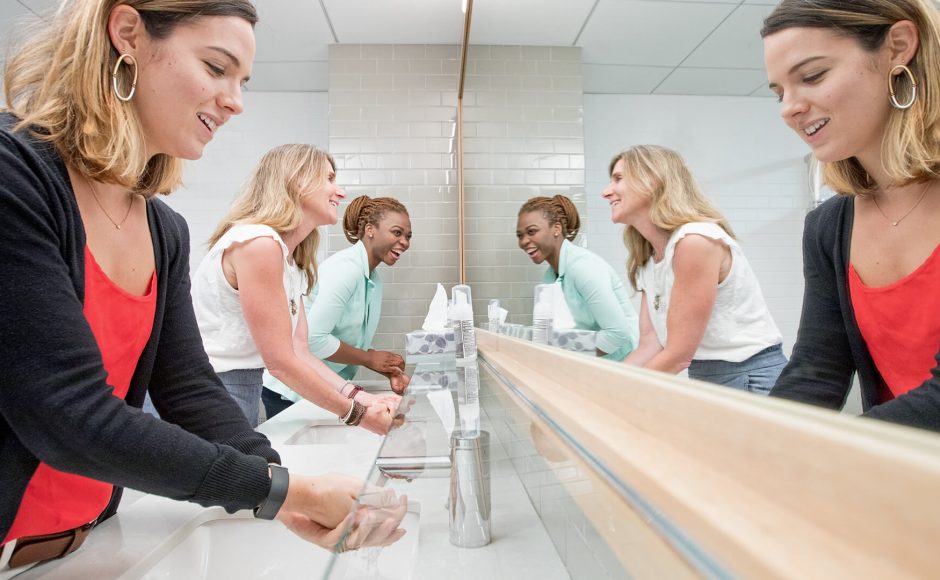How Hygienic Are The Visitors In Public Toilets?
The heavy footfall of public bathrooms means that you can’t guarantee that all your visitors will be demonstrating the same, high levels of hygiene.
Personal hygiene rates in the UK are shockingly bad according to new research. A survey of 5,000 office workers revealed that only 61% washed their hands properly with warm water and soap after going to the toilet. If that’s the conduct that is carried out in the workplace in front of colleagues who you’d want to make a positive impression in front of, then imagine the hygiene habits in a rather more anonymous public restroom environment. Public toilets experience a large amount of footfall, making them a high-risk setting for people to pick up infections and disease from. With varying attitudes to hygiene, and of course potentially low levels of cleaning activity, it’s possible to pick up bugs such as E.Coli and salmonella from the toilet seat of a public restroom according to NHS Physician, Dr. Preethi Daniel. But this risk is reduced dramatically when the bathroom benefits from washroom services.
What Can Be Supplied?
A washroom services package for a public restroom might include hand dryers, which are more hygienic than towels, as well as sanitisers, liquid soap units, dispensers for sanitary products, and of course the regular removal and replacement of sanitary bins.
Poor Hygiene Habits
Unlike the workplace, where you may be able to get HR to put out a general message encouraging workers to improve their toilet hygiene for the good of their colleagues, in the case of a public restroom, this is far more challenging. Some impactful posters on the back of each cubicle door might remind visitors about the importance of washing their hands, but essentially a public toilet will always invite the possibility of unhealthy practices due to varying attitudes towards hygiene.
Where Germs Accumulate
A 2014 study of public bathrooms at a university in Colorado found skin-associated bacteria present on doors, cubicles, taps and soap dispensers, as well as gut-related bacteria including Firmicutes and Bacteroidetes on toilet handles and seats, which are likely a result of faecal contamination from flush backspray or direct contact.
This is where washroom services are so important to combat the risks introduced by those who are overly casual with their approach to health. By installing air sanitisers within a public bathroom, not only do they eliminate unpleasant odours by emitting a fragrant smell to make the environment more appealing to the public, but from a health perspective, the unit also kills up to 99.5% of harmful bacteria and viruses. So regardless of who is using the public bathroom, using the dual combination of toilet seat and air sanitisers will help to provide a positive knockdown rate of these infectious germs.
Safe Removal Of Sanitary Bins
Another area for concern in female public toilets, is the disposal of sanitary products according to a washroom services Essex based provider. The Lactobacillus bacteria is linked with the vaginal microbiome and is therefore commonly found in women’s bathrooms. Those with a washroom services package will be meeting the requirements of the law to provide a safe way for women to discreetly and safely dispose of sanitary items. Depending on the amount of footfall the toilets experience, you might need to have sanitary bins replaced bi-weekly or even weekly to ensure maximum levels of hygiene.
When it comes to public toilets, you never know who is going to be using them, so it pays to provide an inviting and hygienic environment for visitors by ensuring that the restroom is maintained and germ-free.


